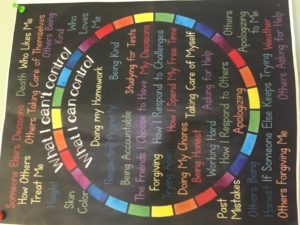How Teacher Expectations Shape Student Performance
by Aaron Leo and Kristen C. Wilcox
Decades of school reform have focused on teachers’ instructional practices. Many of the recommended changes have highlighted research on ”evidence-based” best practices that are gleaned from such sources as the What Works Clearinghouse. Unfortunately, as Joyce and Cartwright in a recent article assert, many of these studies utilize research methods that cannot take into account how a particular strategy or program might travel into practice in different contexts.
 Therefore, not unexpectedly, these efforts to use “evidence-based practices” have been met with mixed results for different populations of students and show widening divergences in the highest and lowest performing students.
Therefore, not unexpectedly, these efforts to use “evidence-based practices” have been met with mixed results for different populations of students and show widening divergences in the highest and lowest performing students.
Researchers have pointed to an alternative to “evidence-based” best practices that teachers can use to affect their students’ performance: raising their expectations. Several strands of research have pointed to the significant and tangible effects that teacher expectations have on student performance.
Teacher Expectations
One of the first researchers to study the effects of teacher expectations on student performance was Robert Rosenthal. In an early study, Rosenthal coined the term “Pygmalion Effect” which he defined as a process in which “one person’s expectation for another person’s behavior comes to serve as a self-fulfilling prophecy.” In other words, the Pygmalion Effect can explain how students come to fulfill the expectations that their teachers hold for them.
In Rosenthal’s original study, teachers were told that a random group of students were identified as “bloomers” (students who would excel academically). Throughout the school year, teachers’ behavior towards these students was affected by their expectations that they would excel. When Rosenthal tested the students at the end of the year, he found that this random group of students, in fact, were excelling, in part, due to their teachers’ expectations of them.
Although some have argued that Rosenthal’s work simplifies and overstates a nuanced process, a range of scholarship on the Pygmalion Effect has generally confirmed these findings and applied them to subjects as varied as math, physical education and college completion.
Stereotype Threat
The Pygmalion Effect works in the opposite direction, too, as students may slump to meet lowered expectations that teachers hold of them. As the Social Psychologist Claude Steele has shown in his work on Stereotype Threat, students who are members of disadvantaged groups may be further harmed by negative expectations about their performance. In one such study, the performance of African American men on the same test differed drastically depending on whether it was described as a test of “physical” versus “intellectual” abilities. Steele showed that Black men’s awareness of the stereotype labeling them as intellectually inferior led to the differences in scores. In contrast, “Stereotype Lift” can occur when members of positively-stereotyped groups are made aware of downward comparisons  to other groups and benefit from this contrast.
to other groups and benefit from this contrast.
Despite these findings, critics have maintained that the effects of teacher expectations on student performance is only part of the equation.
The impact of student poverty or under-funded schools, for instance, may far outweigh the effects of teachers with the highest expectations for their students. Moreover, the expectations teachers have of their students are not often constructed with malice or conscious intent, but through implicit and unconscious biases – aspects that all individuals possess. Nonetheless, it is important for researchers to understand how such expectations are constructed and the effects they have on students’ academic performance.
NYKids Student Study and The Relationships of Expectations and Performance
NYKids researchers are currently analyzing data which builds from our recent Study of College and Career Readiness in Odds-Beating Schools. In revisiting four of the original seven odds-beating schools studied, we spoke with dozens of students about their experiences in school and plans for the future. We noted a strong correlation between the way teachers describe expectations for their students and how students talk about their prospects. As one 12th grade participant put it:
That’s what also can push students to do better because you don’t want to disappoint… you like this teacher, they’re really cool, you don’t want to disappoint this teacher. You want to do better.
Stay tuned for new study results this fall as well as forthcoming blogs on similar topics. Please follow us on Facebook and Twitter, and reach out to us at nykids@albany.edu with suggestions, comments, questions, or inquiries about our direct support for continuous improvement.
